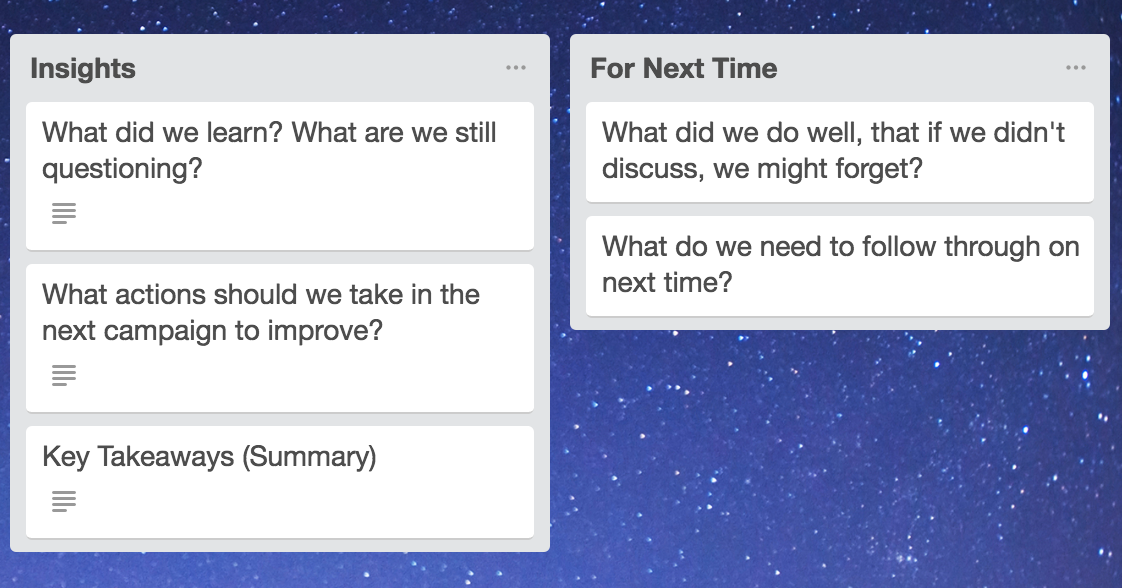Marketers: Does this scenario sound familiar? You’ve been planning your next big marketing campaign for weeks, perhaps months even. Many teams are involved in making sure this plan is executed without a hitch. You and your team have huge expectations.
And yet, when it comes down to the eleventh hour, you find that everything is all wrong. You’re going to miss your deadline, the end result is completely overlooking a major messaging opportunity, or worse, you realize you’ve ended up with a similar idea to the next brand…
What went wrong?
Launching a successful marketing campaign is no easy task, but there are 4 quick adjustments you could be making to improve the result immediately. Here they are:
Mistake #1: Your campaign was not transparent to the rest of the team
You’ve been heads down busy on a campaign with yourself and a few other people. When you finally peek your head out for some air, however, you realize you forgot to get the rest of your team on board with the plan. That’s mistake #1: it’s important to get team members on board with your plan as early as possible.
The reason you should be sharing information early with seemingly non-relevant team members is twofold:
- They may be able to offer you more creative suggestions as people with an outside perspective.
- They might realize there is another department that needs to be given a heads up.
Bouncing ideas off unrelated parties is a great way to get the perspective of people who haven’t been so stuck in the weeds of every myriad detail. These unrelated folks might be able to see the campaign goals from a zoomed out perspective, and are able to give you a different way of looking at your goals, plans, and timelines.
 Get access to more of our best collaboration tips and ideas in our free marketing campaign planner and ebook.
Get access to more of our best collaboration tips and ideas in our free marketing campaign planner and ebook.
Outside-the-scope team members might also recognize opportunities to flag other departments for an early heads up. Should the Customer Support team be made aware of the promo you are offering customers? If you are designing a complex new sign-up flow for this campaign, should you perhaps consult with the engineering team much earlier to make sure the resources are there?
Remember that your marketing campaign is one piece of a much bigger story. Is the rest of your company filled in?
Mistake #2: The Tools You Are Using Are Not Centralized

In order to execute this campaign, you and your small Marketing team have toiled away in private Google Docs, the engineers have tweaked settings in Github, and the Support team is answering questions about related issues customers are having in Helpscout.
All of this begs the question: How is any team supposed to know what the other team is doing?
It’s common at most companies that individual teams and departments are leveraging different tools that make sense for their specific work. While it’s perfectly logical, it can lend itself to siloed work.
For example, how does the marketing team know how far developers have come on the special campaign website if they don’t have access to Github? How can Marketing teams understand the customer pain points their new campaign seeks to solve if they are not reading the Customer Support tickets in Helpscout?
The answer, of course, is to have a centralized platform where different statuses from different apps and team updates can all come together. Leveraging Trello’s Power-Ups platform to connect tools like GitHub, Slack, Helpscout, and many others is a way to give context from each card on the progress of each team’s responsibilities.
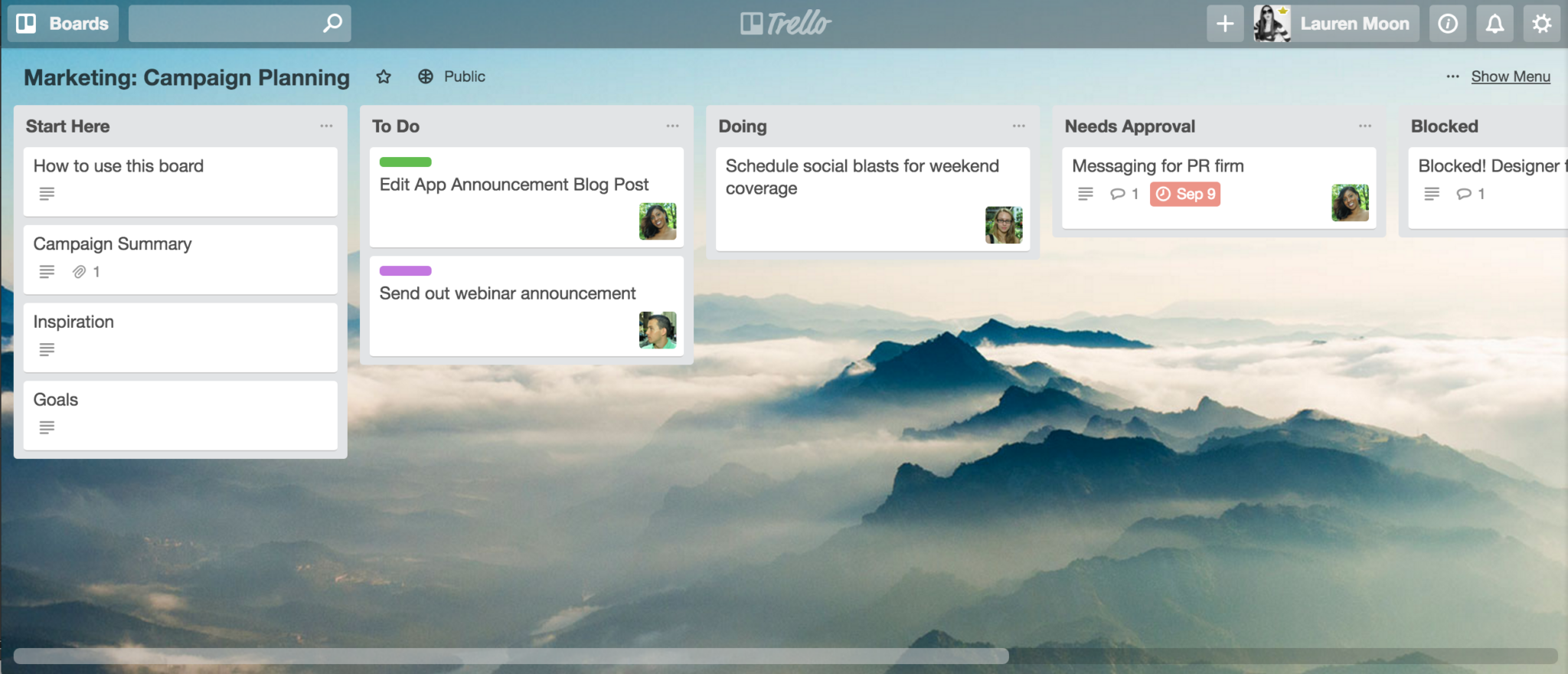
All team members can give their updates in one place, and the project manager can understand the status of everything. This way, there is no confusion when some teams are ready to launch and other teams still have a backlog. Last minute scrambling leads to mistakes, messiness, and pushed back deadlines. It can also lead to cross-team frustrations, where proper communication could have solved the problem in the first place.
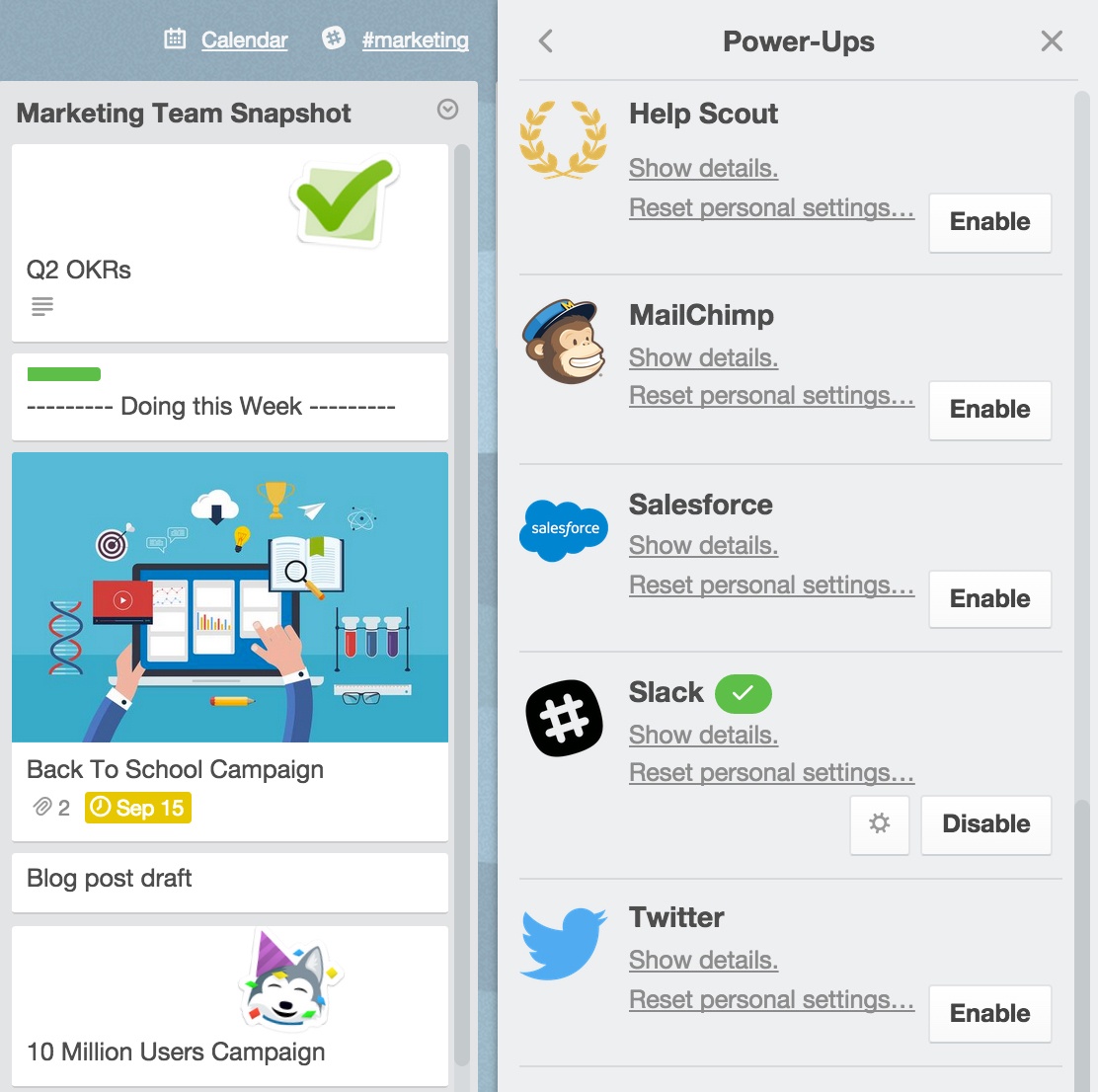
All of this perspective comes out of transparency. If all of your campaign plans are buried in a private Google Doc accessible only to you and your immediate reports, then your campaign is essentially stranded on a deserted island. Leveraging tools like Trello boards to plan campaigns and see statuses helps other team members understand what you’re working on, see the timeline in real time, and interject accordingly.
Outside-the-scope team members might also recognize opportunities to flag other departments for an early heads up. Should the Customer Support team be made aware of the promo you are offering customers? If you are designing a complex new sign-up flow for this campaign, should you perhaps consult with the engineering team much earlier to make sure the resources are there?
Remember that your marketing campaign is one piece of a much bigger story. Is the rest of your company filled in?
If you’re looking for a product that will help you easily keep relevant stakeholders across your business in the loop with the planning and execution of your marketing campaign, one such tool is LaunchNotes. While it first began as a release notes tool, it’s grown into a full product launch platform that helps teams align on and execute great product launches.
Mistake #3: You’re Not Automating Menial Tasks
Face it: There are a lot of little tasks you’re doing that could be performed by a robot.
Not only is automation a way to facilitate faster work, it also eliminates human error. Leveraging amazing connectivity platforms like Zapier are a way to get the menial out of the way so that you can focus on the deep planning and work your Marketing campaign requires. Zapier allows you to connect disparate apps to one another using triggers, which signal that an action in one app will automatically perform a different action in another place.
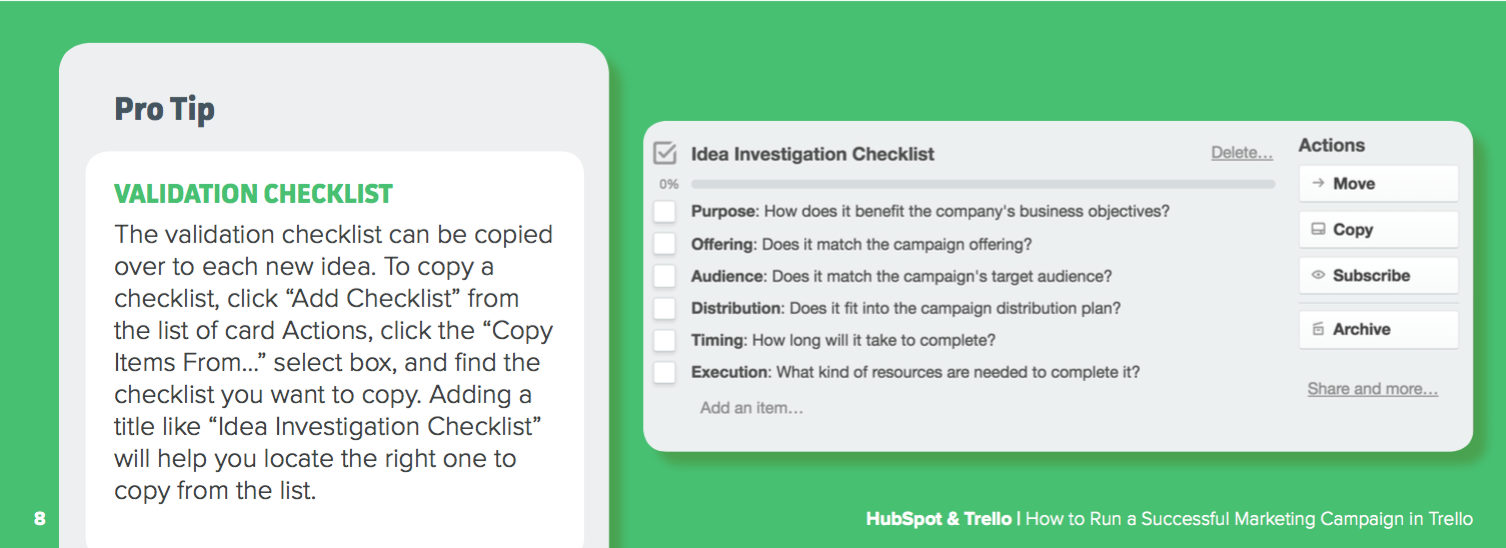 Use automation tools like Zapier to automatically copy cards with pre-made checklists at intervals of your choosing. More tips like these in our free marketing campaign ebook.
Use automation tools like Zapier to automatically copy cards with pre-made checklists at intervals of your choosing. More tips like these in our free marketing campaign ebook.
For example, you can set up Zapier zaps to create a line on your Google Spreadsheet every time a card is created on a specific Trello list. Wow, right?
You can also enable Trello’s Card Repeater Power-Up for recurring tasks that happen at given intervals, like every Monday or even every day. Instead of manually creating the same card over and over, Card Repeater allows you to automate a specific card to create itself at a time that you specify.
All this means more time for planning and creating assets, or even that extra cup of coffee you so desperately desire.
Mistake #4: Your Retrospectives Are Ineffective, Or (Gasp!) Non-Existent
Learning from your past mistakes is an important lesson to take to future campaigns. What went great? What needs work? These details need to be hashed out and documented for next time, or else time goes by and people forget. History always repeats itself (cue dramatic music).
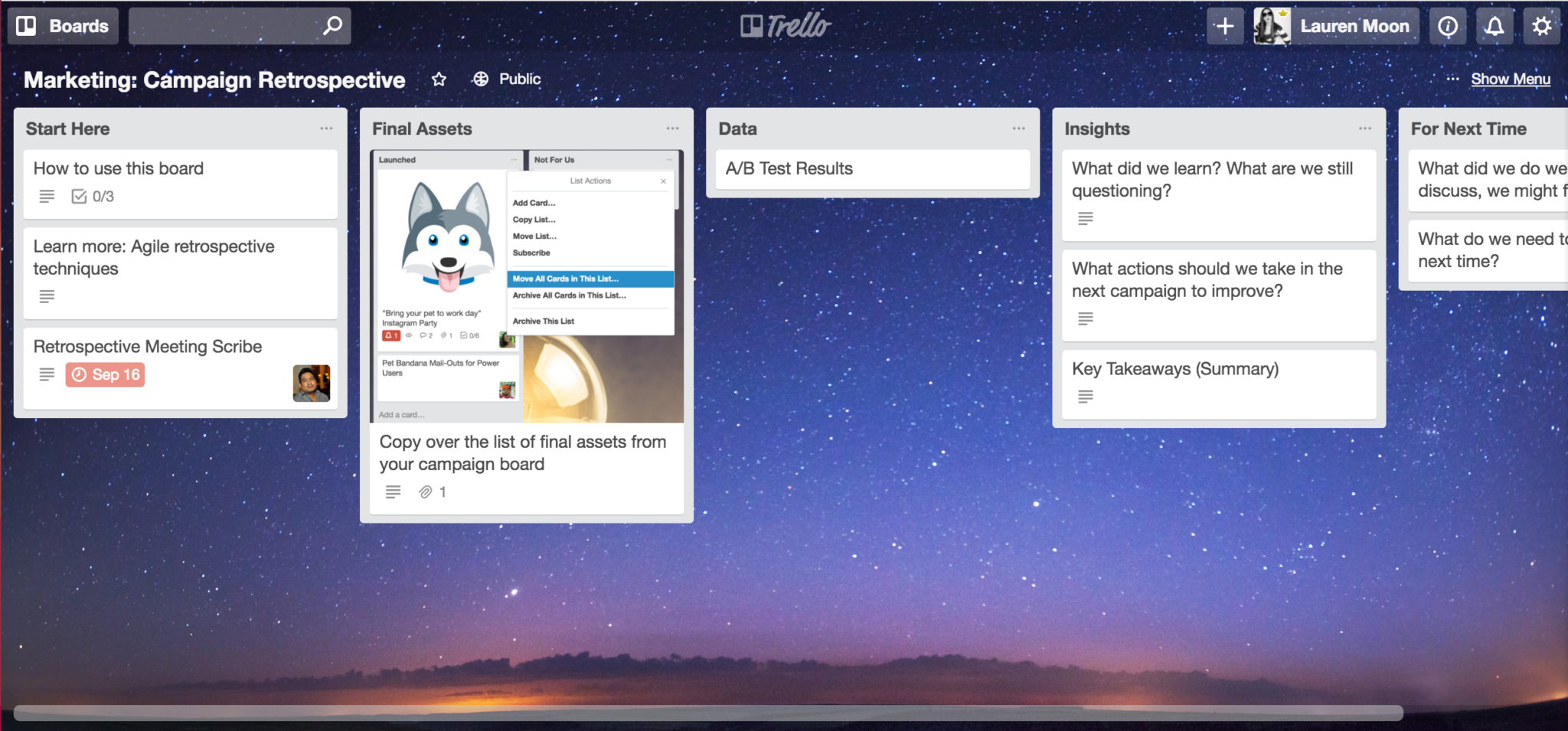 Get sample Trello boards set up for a retrospective workflow in our free marketing campaign ebook.
Get sample Trello boards set up for a retrospective workflow in our free marketing campaign ebook.
Conducting proper, transparent retrospectives after a campaign are essential for future success. Providing a space for team members to air frustrations and celebrate wins is crucial to the process of a successful Marketing campaign. Someone with different responsibilities than you may have experienced the campaign process completely differently than you did. It’s important to talk those issues through, and to devise potential solutions.
Assigning a scribe to document these concerns in an organized fashion is even better than simply discussing them out loud. Trello boards have proven to be an excellent space for retrospective planning and documentation. Boards can act as a repository of information, a place for all contributors to create discussion cards and vote on different points, and also to put down action items.
Prior to the retrospective, ask all team members to add their discussion points and context on the card. During the meeting, the lead goes through each item and discussion ensues. A scribe writes down the points that are made as well as potential solutions. All of this information is easily referenceable next time the campaign bell tolls.
In short, a successful Marketing campaign requires an unruly amount of planning, coordination, communication, and synthesis of information and assets to come together smoothly. This is not a matter for scribbled, back-of-the-napkin notes! Take caution, plan well, and listen. Oh, and use a Trello board (obviously).


